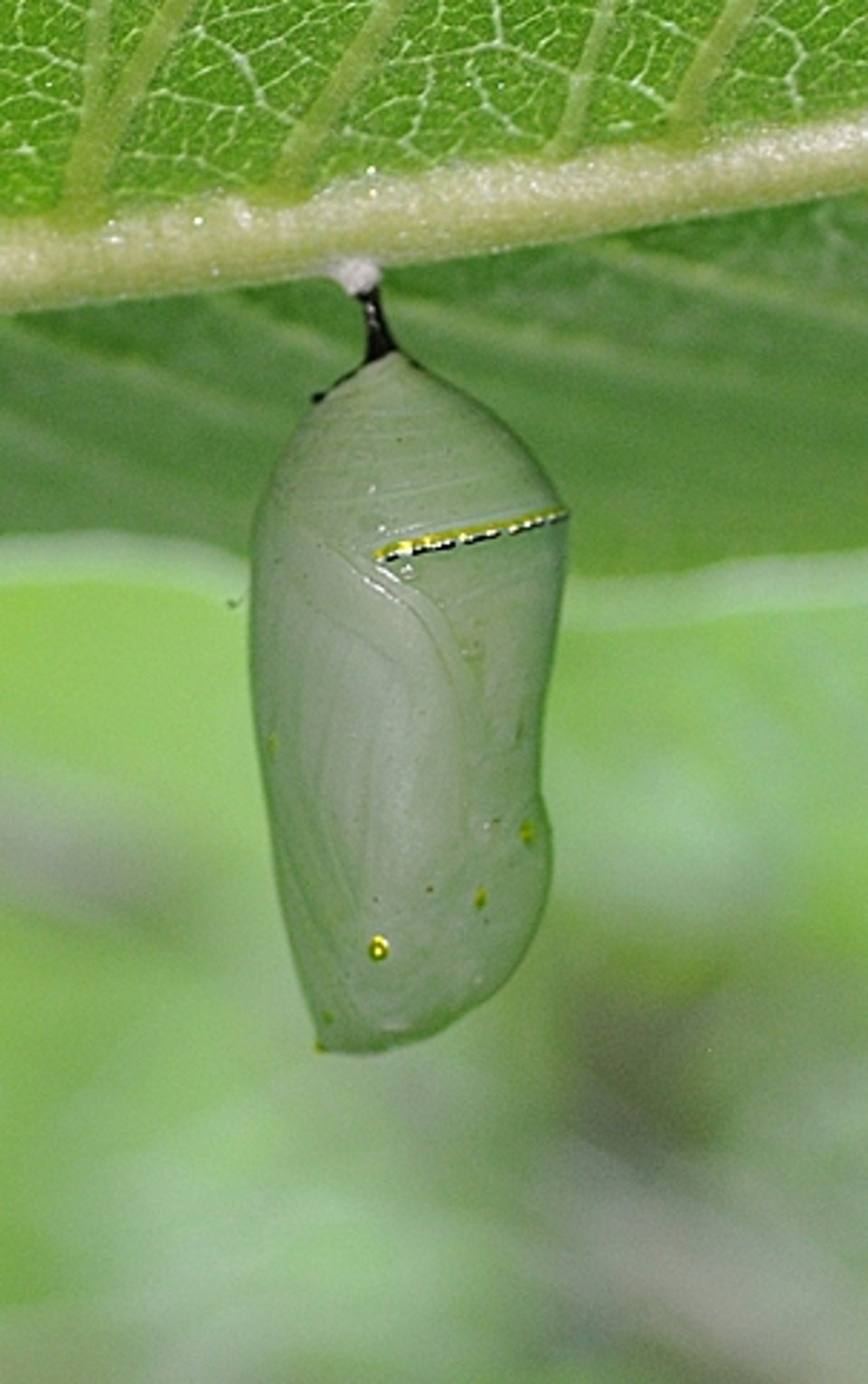It’s a great big (and sometimes nasty) world out there. Big stories hit us relentlessly as the reporting media tap into every nuance of information that may prove newsworthy. Much of it isn’t, of course, but that doesn’t stop some outlets from making it news anyway.
Our instantaneous global connections can sometimes overwhelm us and send you running into the woods. Hmm, maybe that’s a good thing.
We had a newsworthy event happen in our neighbourhood yesterday, or at least it was of interest to us who live in the valley. Our daughter, Erin, and her son, Toby, had been working around the yard a week or so ago and discovered a fairly big caterpillar, big enough to elicit Toby’s request to put in a jar and keep it. The delicate yellow, black and white stripes made for easy identification: monarch butterfly.
Although Erin was reluctant at first to be stuffing animals in jars, we both knew it would benefit Toby’s experience at witnessing the miracle of metamorphosis. “Meta” means big, “morph” means to change and “sis” is a process… so this was to be a “big changing process”, the natural wonder of a caterpillar becoming a butterfly. (Not to be confused with the daily event that new parents go though, when a ‘big changing process’ involves two diapers, pails, bags, rags, water, wipes, patience, cajoling, etc. But I digress.)
And so the caterpillar was scooped into a jar, with a stick and a couple of milkweed leaves added to create that ambience of a natural habitat. Within a day the caterpillar ceased its anxious wanderings, ignored the stick and leaves, climbed up the jar and hung upside down on the lid.
The transformation from caterpillar to chrysalis has always been an awesome step in the monarch’s life cycle, but now scientists have found out that ‘awesome’ falls far short of truly describing this event.
Inside that wriggly caterpillar are several sets of special cells, each group predetermined as to what it will eventually grow into: wing, leg, eye, etc.; the only thing these cells need to get going is a growing medium.
So as the caterpillar hangs upside down and prepares to spilt and shed its outer skin, thus revealing its inner skin which forms the shell of the chrysalis, the insides have already begun to turn to mush, creating a soup of energy and cell groups, re-assembling themselves for big changes. While it is still the same creature that created the chrysalis, soon nothing remains of the caterpillar.
For three or four days the bright green covering of the chrysalis, decorated as it is with a gold stripe and black dots, contains simply a rich fluid substance that the cell groups begin growing in, aligning themselves so that the finished product will have wings and legs exactly where wings and legs should be.
Most interestingly, these cell groups have been with the caterpillar from its birth from an egg, and have stayed with it as four sets of outer skin (called instars) have been shed as the caterpillar grew from tiny to gigantic. Held on hold for the last few weeks, these cell groups will now, dare I say magically, create a butterfly in seven to ten days. This includes a digestive system, a heart, muscles… the whole kit and caboodle.
Yes, metamorphic change is not for the faint of heart, nor for anything other than a butterfly or moth. When Toby’s caterpillar-turned-butterfly was released yesterday it should have been a news-worthy item: “Extra! Extra! Read all about it! Caterpillar was really a butterfly all along!”
But, as way cool and awesome as all that is, it is but a step in an incredible life cycle. The adult monarchs that we see flying around us this week are but the third of four generations that will be produced within a one-year span.
The first generation came from the wintering grounds in Mexico where they emerged from a long winter stupor, landed in Texas, mated, laid eggs and died.
The new caterpillars ate, grew, turned into second generation flying adults and ventured north to Illinois and Indiana; another generation created the monarch butterflies that come to Ontario. This third generation butterflies are what is flying around us today. But it ain’t over yet, folks.
The next generation (Gen4 for you new age folks, the Methuselah generation for you older folks) will survive many months and fly several thousand kilometres back to the wintering grounds in Mexico, where they will sleep until next spring to start another four-generation cycle all over again.
While the whole migration thing is a marvel, what really gets me is that four times the genetics of the individual were turned to liquid mush, have been reassembled, gone on to reproduce a separate entity (several, in fact), have had the whole genetic wiring rebuilt again, and again, and that fourth generation (and ONLY the fourth generation) has the transcontinental flyway route still ingrained to its memory. Way, way beyond plain awesome!
Next time you can’t make sense of the news, just turn to nature… where everything runs like clockwork and is absolutely predictable. It should be boring, but it’s not!



